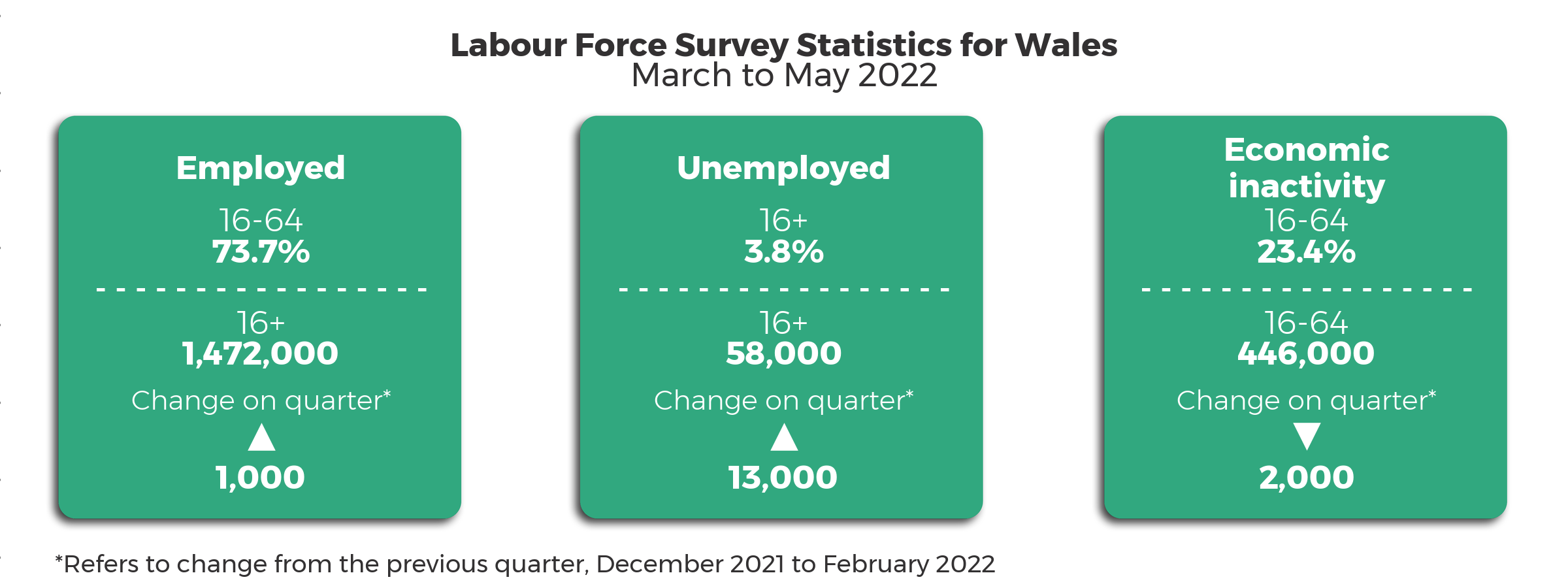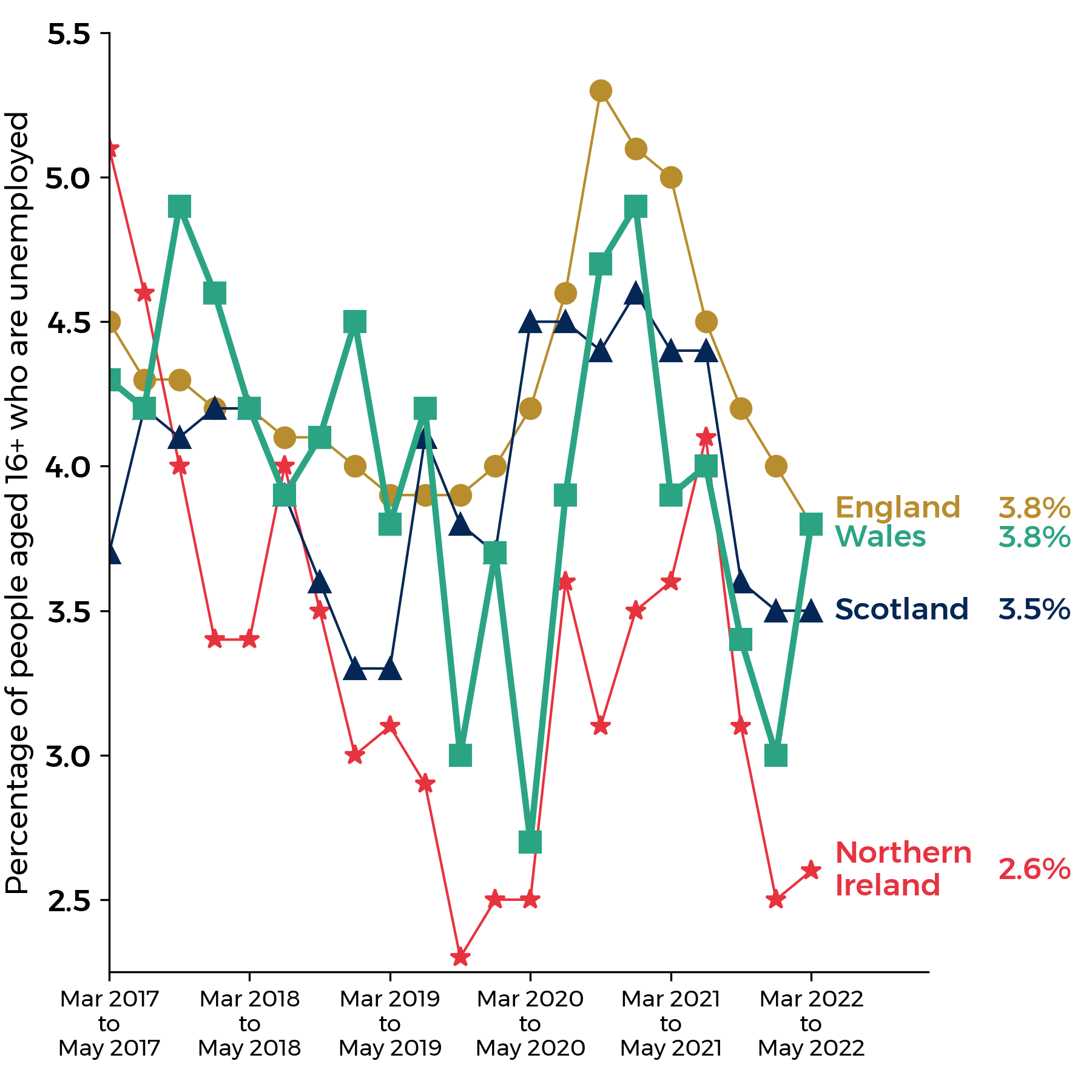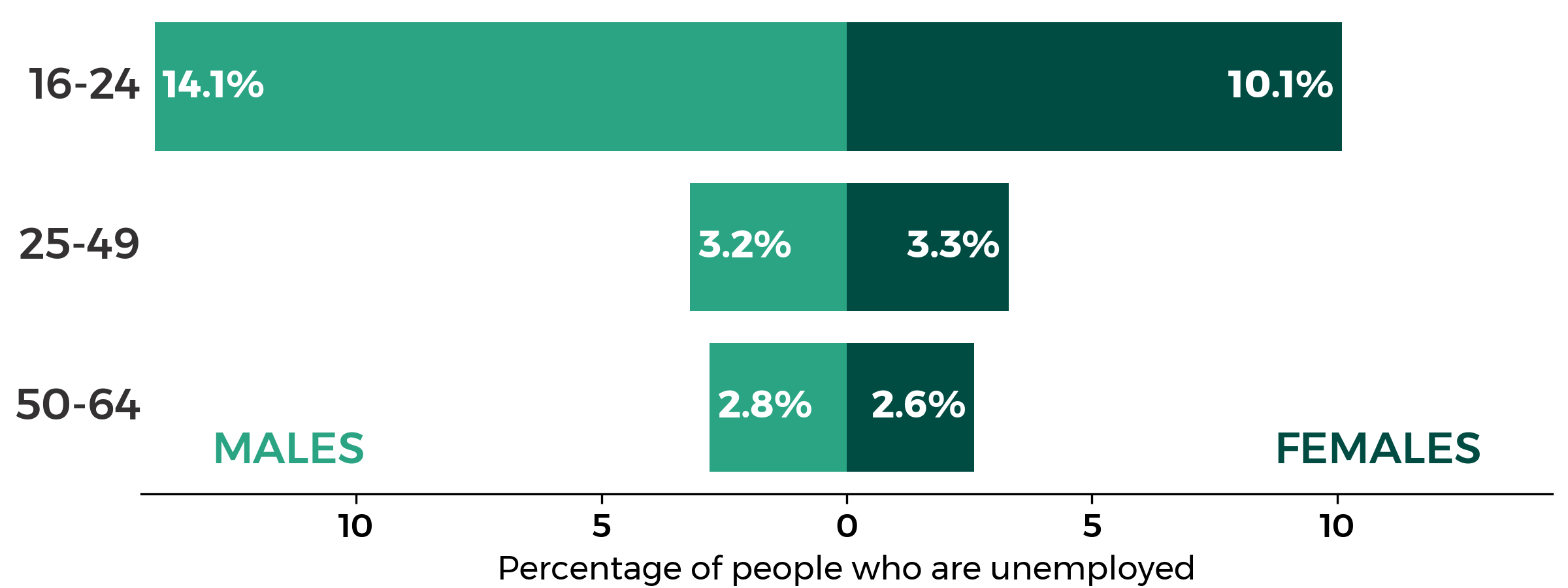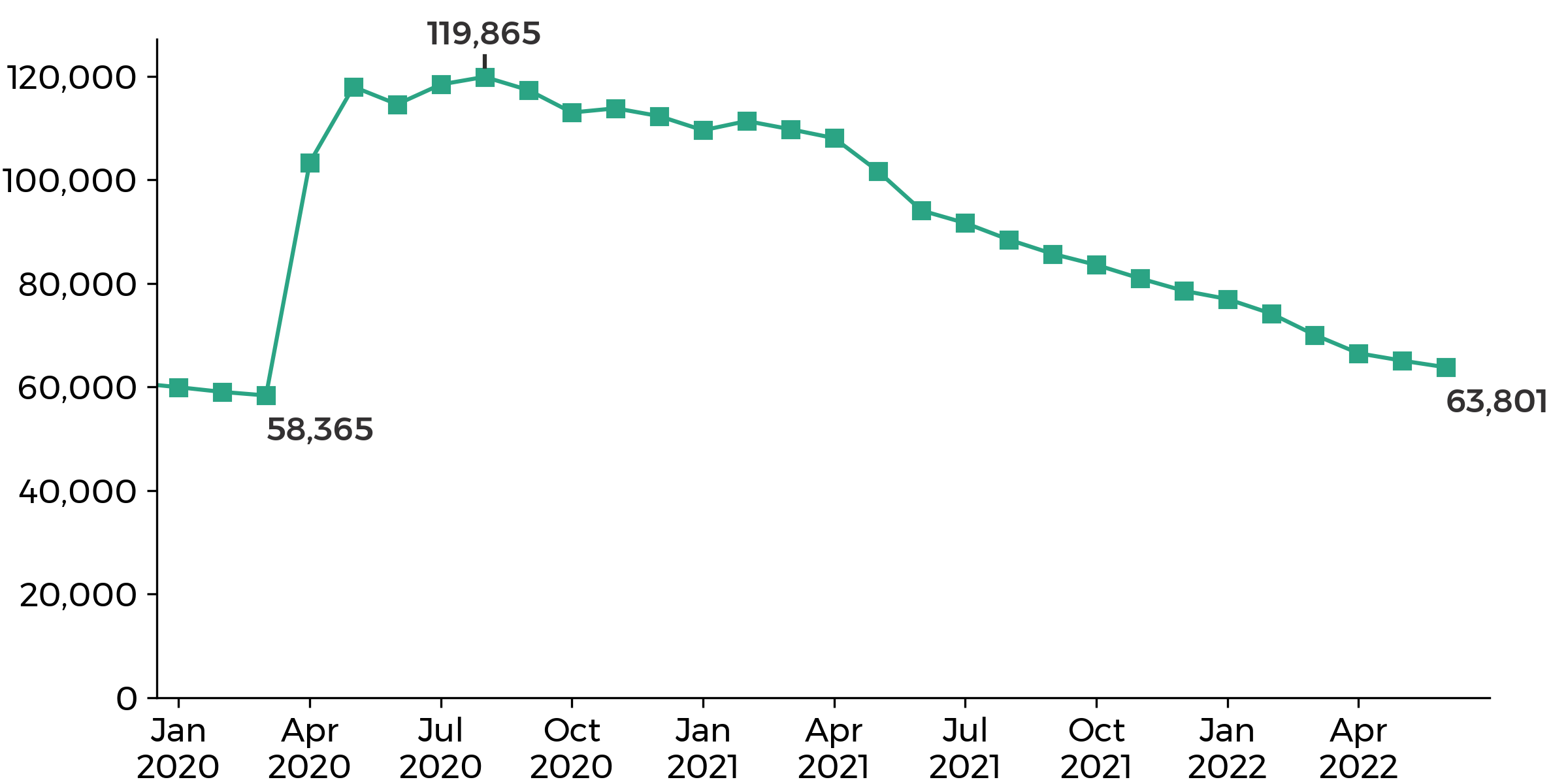Each month the Office for National Statistics (ONS) publishes estimates of employment and unemployment rates. These estimates are based on information collected by the Labour Force Survey (LFS) for the preceding three-month period. The time lag to these figures means that the latest labour market release published on 19 July 2022 provides information from March 2022 to May 2022.
What do the latest Labour Force Survey figures show?
The Labour Force Survey (LFS) is a quarterly household survey of around 80,000 adults. The survey asks a range of questions on employment and the labour market. As people were still furloughed during part of the latest reporting period (September 2021 to November 2021) the LFS doesn’t yet reflect the full impact of coronavirus on the labour market in Wales.
ONS explains they have made changes to the LFS:
Labour Force Survey (LFS) responses have been reweighted to new populations derived using growth rates from HM Revenue and Customs (HMRC) Real Time Information (RTI), to allow for different trends during the coronavirus (COVID-19) pandemic. The reweighting will give improved estimates of both rates and levels.
For March to May 2022 the unemployment rate for people aged 16+ in Wales was 3.8%, higher than 3.0% in the previous quarter (December 2021 to February 2022). This is an increase of 13,000 people from the previous quarter to 58,000.

Source: ONS, Regional labour market: Headline indicators for Wales
The unemployment rate in Wales (3.8%) is the same as England (3.8%) and higher than Northern Ireland (2.6%) and Scotland (3.5%).
Percentage of people aged 16+ who are unemployed, UK nations; March 2017 – May 2017 to March 2022 – May 2022.

Source: ONS, Labour market in the regions of the UK: July 2022
Data from the LFS is available showing the unemployment rate by sex and age for 12 months to December 2021. The latest data shows unemployment rates are highest for both males and females in the 16-24 age group. In the 16-24 and 50-64 age groups males have higher unemployment rates than females.
Unemployment rate by age and sex in Wales; 12 months to December 2021

Unemployment data is also available by parliamentary constituency. The map below shows for the 12 months to December 2021 Swansea West had the highest rate (11.3%) and Bridgend the lowest rate (1.9%).

Note: The sample sizes in Brecon and Radnorshire and Rhondda are too small to provide estimates.
Are there other data we can use to see what’s happening in the labour market in Wales?
ONS has also been working with HMRC to produce estimates of employees being paid through the PAYE system. The PAYE seasonally adjusted data for June 2022 (1,296,296) shows the number of payrolled employees in Wales is above the number in February 2020. There was an increase of 972 payrolled employees between May 2022 and June 2022.
Claimant count - seasonally adjusted
ONS publishes an experimental series counting the number of people claiming Jobseeker's Allowance plus those who claim Universal Credit and are required to seek work and be available for work. This replaces the number of people claiming Jobseeker's Allowance as the headline indicator of the number of people claiming benefits principally for the reason of being unemployed. The latest data for June 2022 show that the Wales claimant count went up from 58,365 in March 2020 to 119,865 in August 2020, then decreasing to 63,801 in June 2022.
Claimant count for Wales; January 2020 to June 2022

Source, NOMIS, ONS Claimant Count – seasonally adjusted
Notes: From May 2013 onwards these figures are considered Experimental Statistics. Under Universal Credit a broader span of claimants are required to look for work than under Jobseeker's Allowance. As Universal Credit Full Service is rolled out in particular areas, the number of people recorded as being on the Claimant Count is likely to rise. Rates for regions and countries from 2018 onwards are calculated using the mid-2018 resident population aged 16-64.
Definitions
The number of unemployed people in the UK includes people who meet the definition of unemployment specified by the International Labour Organisation (ILO). The ILO defines unemployed people as being:
- without a job, have been actively seeking work in the past four weeks and are available to start work in the next two weeks
- out of work, have found a job and are waiting to start it in the next two weeks
Employment measures the number of people aged 16 years and over in paid work. The headline measure of employment for the UK is the employment rate for those aged from 16 to 64 years.
The headline measure of inactivity for the UK is the rate of those aged from 16 to 64 without a job who have not sought work in the last four weeks and/or are not available to start work in the next two weeks.
Article by Joe Wilkes and Helen Jones, Senedd Research, Welsh Parliament






